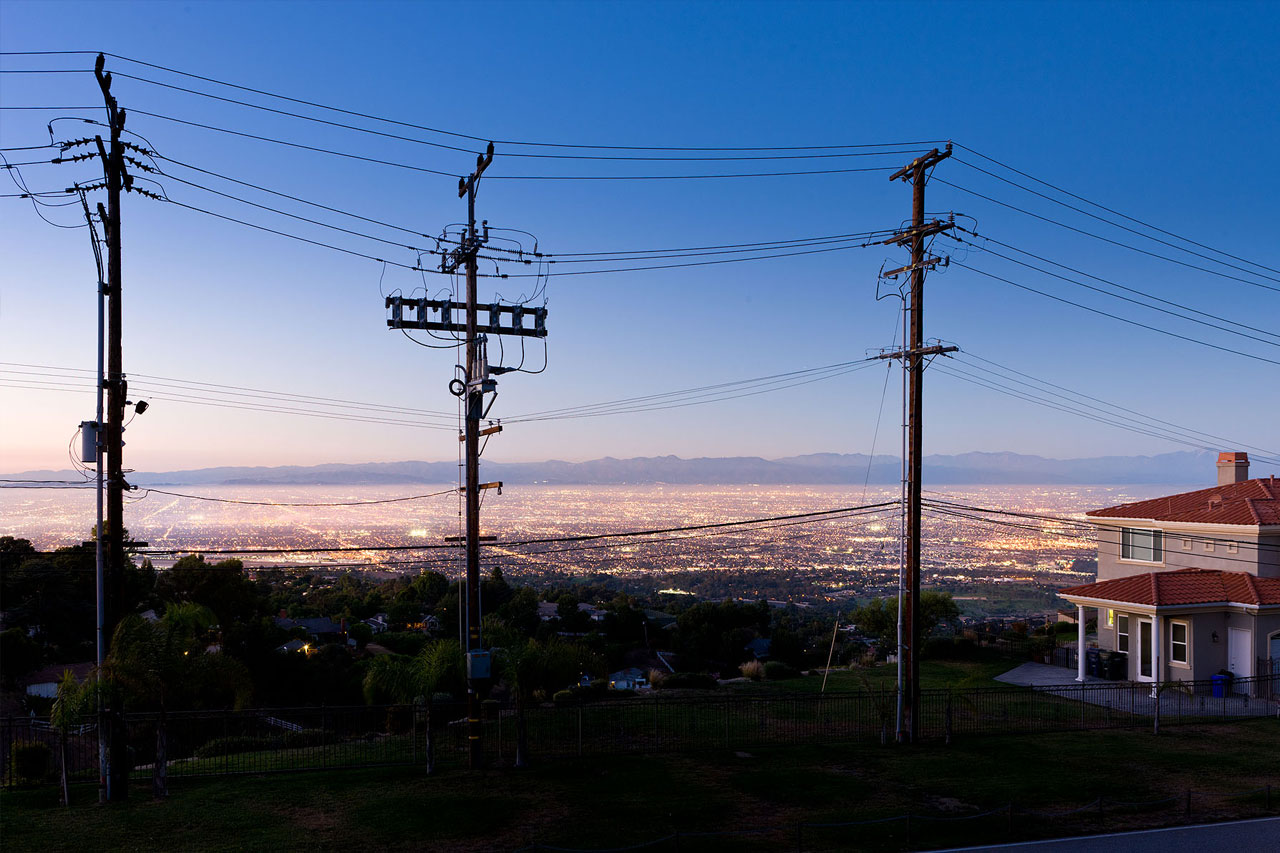MIRKO ZARDINI /
MATERIAL LOS ANGELES
Invited by National Geographic to write a book on a location of her own choosing, A. M. Homes decided, after considering various possibilities, to focus on Los Angeles, “the most American city,” but perhaps also “the most surreal place inAmerica.” Starting from the Chateau Marmont, where Homes took refuge, she set out to present a complex and articulate vision of the metropolis of Los Angeles through the voices of various “personalities.” One of these was Michael Maltzan, who described Los Angeles as “a city which has lived off of its potential for an incredibly long time,” and now has the possibility “to transcend, to live up to its potential.” But what exactly is this potentiality? What exactly is Michael Maltzan’s Los Angeles?
Maltzan’s Los Angeles is surely a more public one than the Los Angelesof the past. This is not so much a consequence of the construction of landmark buildings like the Cathedral of Our Lady of the Angels and the Walt Disney Concert Hall, or the more modest new neighborhood branches of the Los Angeles public library system. Neither is it due to the presence of traditional public spaces. Los Angeles is more public today thanks to the discovery of what urban theorist and historian Margaret Crawford defined as “everyday public spaces” (vacant lots, sidewalks, front yards, parks, and parking lots), unexpected resources for the diverse cultures that coexist, and sometimes collide in Los Angeles. The city’s profile as the privileged site for the invention of new models for domestic life has given way to that of a laboratory for experiments involving novel concepts of public space. For Maltzan, Los Angeles is the ground for rethinking the space between house and street, and for proposing a new kind of open space. Situated at the edge of intersecting zones, and bordered by heterogeneous urban conditions, his Fresno Metropolitan Museum and Sonoma County Museum become liminal structures that introduce informality into traditional public places.
The transition from this new kind of public space to places that are more intimate is typically gradual. Instead of harking back to the informal lifestyle that is so closely bound up with the idea of domestic architecture in Los Angeles, Maltzan advances the possibility of a “fluid lifestyle” extended to the realm of public life. This presupposes a slow and continuous movement that informs the building as a whole, allowing for the ingenious deployment of more or less ad hoc places for rest and quiet contemplation. These are works of architecture, scenarios, and landscapes—one thinks of the Feldman/Horn Center for the Arts in North Hollywood, and the Hergott/Shepard Residence in Beverly Hills—that imply the presence not of an outside observer, but of inhabitants. Maltzan’s buildings could not exist without their occupants, without being “used.” The moving image inevitably associated withLos Angelesno longer pertains only to the realm of cinema, or that of the automobile: It now belongs to the pedestrian, the museum visitor, the occupant. Through a range of optical feats, Maltzan’s buildings offer “visual and tactile opportunities, deep visions,” oblique and unexpected views, distortions of perspective. He conceives of itineraries offering multiple possibilities within the same building (as with Kidspace Children’s Museum in Pasadena), which do not simply depart from the threshold and move inward. Instead, they are multi-directional, embracing the surrounding landscape, the street, the parking lot, and even, as in the case of MoMA Queens, anticipating the way passengers arriving on the light rail system glimpse the building thanks to the oversized letters on the roof. In this sense, there are always unexpected surprises lying in wait for us, such as the view of the sea in the optical telescope of the Beach Residence at Malibu.
Continuing an established tradition in Los Angeles, many of Maltzan’s interventions entail conversions of existing buildings. Los Angeles is a city that grows on itself. After finally abandoning the bucolic idea of modernity, the metropolis has discovered that its principal resource lies in its existing real estate and no longer in the threatened elements of nature that fringe the city, which as often as not become a source of danger as well as beauty. In this sense Los Angeles is no longer the city of tabula rasa foundations, but rather creative adaptation. And this is true in more ways than one. Los Angeles is a city that has begun to reach its maturity, that is capable of accepting its own history and integrating it into a new and highly diverse urban project—unfolding a new vision, casting a new image. Even where interventions involving unbuilt sites or empty spaces are concerned, the objective for Maltzan is still the transformation—or reinvention—of an existing situation. This is why, in the absence of a preexisting structure, his vision expands, for example, to incorporate elements of the surrounding urban space, to generate physical or visual rapports with a given site, thus rendering the city’s heterogeneous and conflictual universe the “stuff ” of the project. Rather than representing the multiplicity of the city’s different urban histories, diverse programs, and simultaneous presences—essentially the bases for projects like the Skid Row Apartments and Santa Fe Dormitories in downtown Los Angeles—and rather than representing banal contrasts or superficial differences, Maltzan prefers to extract latent energy from this diffuse—and equally profound—field of forces, attributable to artifice as much as nature. It is this latent energy that sustains and fuels his architectural interventions. It is as if Maltzan’s buildings were placed at the confluence of a series of underground faults, producing unstable balance in a city destined to repeatedly alter its shape. But once again, rather than merely representing the city’s transformations, his buildings are energized and strengthened by those transformations, becoming points of repose and equilibrium amid the unstable balance.
Originally published in Alternate Ground
Heinz Architectural Press, 2005

